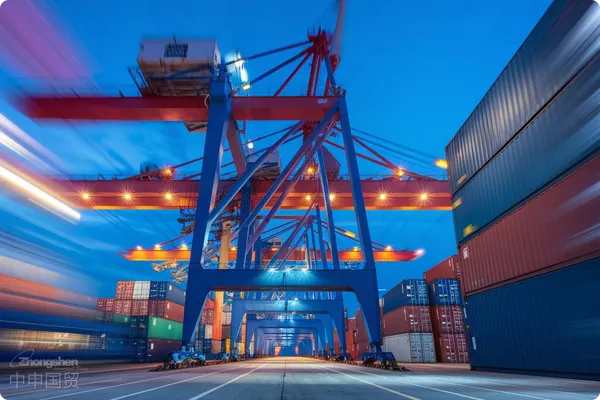- Shanghai Zhongshen International Trade Co., Ltd. - Two decades of trade agency expertise.
- Service Hotline: 139 1787 2118

Contents
ToggleI. The "Clearance Code" for Importing Precision Instruments
In March 2023, a batch of German-made circuit board testers we represented successfully cleared customs at Shanghai Pudong International Airport. As an agency with 15 years of experience,Import RepresentationExperts, we fully understand the clearance challenges for such precision instruments: ensuring accurate HS code classification (typically under heading 9030.90) while addressing potential3CThe application for certification exemption also requires addressing special packaging requirements for precision equipment.
In this case, the "door-to-door" import solution we designed for the client comprises four key stages: pre-shipment document review, airport fast customs clearance, tax optimization processing, and last-mile logistics distribution. By preparing a complete declaration package in advance, including original factory test reports and CE certification documents, we reduced customs clearance time to an industry-leading level.
II. GermanyEquipment ImportsThe "customs clearance timetable"
In practical operations, we have summarized the golden 72-hour process for efficient customs clearance:
First day morning: Complete the pre-declaration before the goods arrive at the port, and simultaneously confirm the manifest information. Our customs clearance team will verify the 14 core data points in advance, especially the consistency between instrument specifications and declared elements.
First afternoon: Complete the customs declaration form entry and electronic filing. For equipment such as circuit board testers, we will specifically indicate the purpose as "for industrial testing," which is crucial for determining the applicable tariff rates.
Day 2: Customs document review and tax assessment are conducted, and we adopt the "bond release" model, allowing customers to arrange cargo pickup before tax payment. This service saves customers an average of 5-7 days in capital occupation time.
Day 3: Complete customs clearance (if no inspection is required) and final cargo pickup. Thanks to our long-established network at Shanghai Airport, even in the event of an inspection, we can expedite the process through "pre-classification" and "pre-valuation" filings.
III. "Danger Zone Warning" for Customs Clearance of Precision Instruments
Through years of experience in importing instruments and equipment, we have identified three common misconceptions that companies often fall into:
Misconception 1: Neglecting the preparation of original factory documentation. German equipment often comes with a large amount of technical documentation. We have encountered cases where customers experienced customs clearance delays due to the lack of original factory calibration certificates. Now, we require customers to provide a complete "technical documentation package."
Misconception 2: Incorrectly reporting device status. The regulatory requirements for second-hand equipment and new equipment differ significantly. We have established an "Equipment Status Verification Checklist" to accurately determine the condition of equipment through 20 indicators.
Misconception 3: Underestimating packaging requirements. Precision testing instruments have extremely high requirements for shockproof transportation. Our partnered German logistics company provides specialized "Instrument Transportation Solutions," including shockproof packaging and temperature-controlled transport.
IV. The "China Declaration Solution" for Expedited Customs Clearance
As a leading importer in the industry, we have established three core strengths:
1. Pre-classification database: We have accumulated an HS code filing database for over 500 types of testing instruments, enabling "second-level" code confirmation.
2. National Customs Clearance Network: Professional teams are stationed at major ports such as Shanghai and Xiamen, with a 7×24 emergency response mechanism implemented at Shanghai Airport in particular.
3. Tax Optimization Services: Through a combination of policies such as free trade zones and bonded areas, we have helped clients achieve tax optimization of up to 30%. For scientific research instruments, we also offer a dedicated tax exemption application channel.
V. Outlook on Future Import Trends
With the implementation of policies such as RCEP, we have observed three new trends:
Trend 1: The import of German equipment is gradually shifting towards a "small-batch, multi-frequency" model, which places higher demands on customs clearance efficiency.
Trend 2: Customs has increased the proportion of "intelligent image review" for instruments and equipment, requiring more accurate descriptions of declaration elements.
Trend 3: Green customs clearance has become a new focus, and we are establishing an environmental compliance assessment system for instruments and equipment.
As a professional agent with 15 years of deep industry experience, we recommend import enterprises to: choose an agent service provider specialized in instrument-related expertise, establish long-term cooperative relationships, and continuously optimize import costs through the "one-time filing, multiple uses" model. Next time when you need to import precision testing equipment, feel free to talk with us—let our expertise pave an efficient customs clearance path for you.
Related Recommendations
? 2025. All Rights Reserved. Shanghai ICP No. 2023007705-2  PSB Record: Shanghai No.31011502009912
PSB Record: Shanghai No.31011502009912










